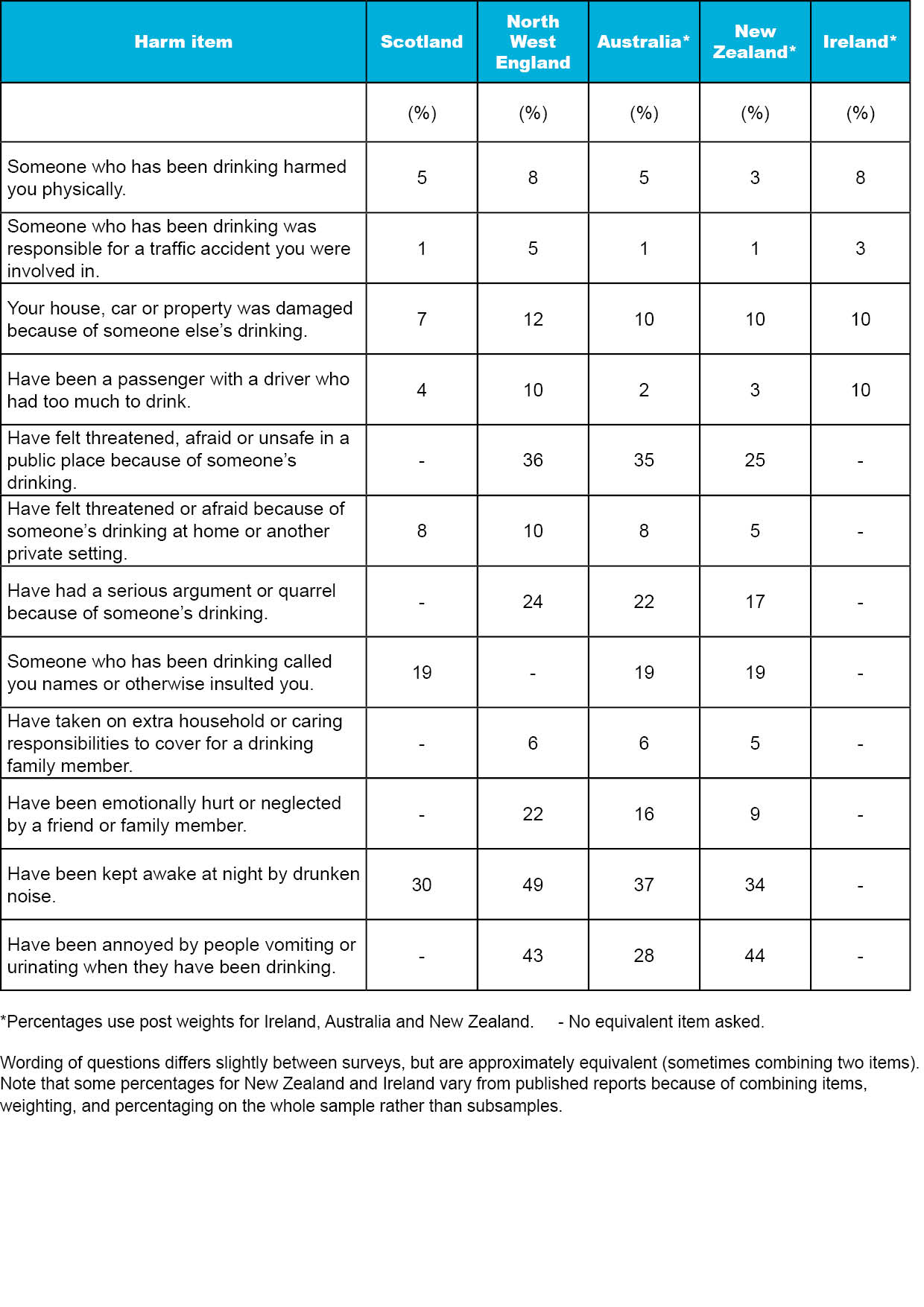For many years, in thinking about problems from drinking the primary consideration was the problems for the drinker. The public health interest was defined primarily in terms of the effects on the drinker’s health and life circumstances, and in terms of providing treatment for drinkers who had become alcoholics. Only in limited circumstances, notably for drink-driving, was there clear recognition that many of the problems from drinking are problems for others around the drinker.
In the last few years, thinking has begun to change, with a wider recognition of the problems that drinking can pose for others – for anyone from someone who has drunk a lot in the street or other public places, and also notably for those close to and interacting regularly with the drinker, such as the drinker’s partner, children, other relatives, friends and work colleagues. The earliest fully-rounded study of these problems, as experienced by the others who had been adversely affected by the drinking, was conducted in Australia in 2008.
Now the idea of such studies has spread widely. Results are currently being compiled from a World Health Organization study of alcohol’s harm to others in seven low-and middle-income countries. Meanwhile, sets of questions about harms from others’ drinking have been asked in population surveys in several countries with levels of alcohol consumption and drinking customs like Australia’s. The questions asked are often drawn from or close to the questions on the Australian survey, allowing comparisons.
A recent report for the UK Institute of Alcohol Studies gives the results of such surveys in Scotland and North West England (the part of England stretching up the west coast from Chester to the Scottish border, and including Manchester and Liverpool). While these two surveys were of the general population, they were not necessarily representative – in particular, the North West England respondents were drawn from volunteers to answer market research surveys. Still, it is interesting to compare the rates of reported harms from drinking within the last 12 months on the British surveys, and on similar survey questions in New Zealand and Ireland, with the rates that Australians reported (Table 1).
The profile reported across rates of different harms looked somewhat similar in the five societies. Quite serious tangible harms such as being physically harmed by someone who had been drinking, or having one’s property damaged because of someone else’s drinking, were reported in all five societies, though only a minority of the population had experienced such a harm in the past 12 months.
At an intermediate level, with rates ranging from about 1 in 6 to 1 in 3, were the reported rates of negative effects that would have been disturbing to experience, and which could have more lasting effects on quality of life – such as having a serious argument or quarrel because of someone’s drinking, feeling threatened, afraid or unsafe in a public place, because of someone’s drinking, or feeling emotionally hurt or neglected by a friend or family member. The most commonly reported – by one-quarter to one-half of respondents — were adverse effects which adversely affect community amenity: being annoyed by drinkers vomiting or urinating in public places, or being kept awake at night by drunken noise.
The general pattern across all five societies, then, is that adverse effects of drinking on the community’s general liveability are very widely experienced. Effects of others’ drinking which are threatening or emotionally upsetting are also quite widely experienced in the population. More serious tangible harms from drinking are less common, but regularly occur in all five of the societies.
Reported rates of experiencing the harms are often a little lower in New Zealand than elsewhere. They were generally higher in North West England, though this might in part reflect that the sample there may be less representative of the population. Rates in Australia tend to fall in about the middle of the range in these five societies with rather similar drinking cultures.
Any way of looking at it, in these societies where drinking alcohol is a regular part of the life of a majority of the adults, and where heavy drinking on weekends or special occasions has wide social acceptance, the harms from others’ drinking are both substantial and widely spread.









1 comment